Space
Sign up for our newsletter
We summarize the week's scientific breakthroughs every Thursday.
-
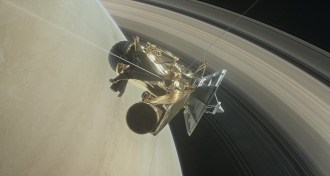 Planetary Science
Planetary ScienceIn ‘grand finale,’ Cassini spacecraft sets off on collision course with Saturn
The Cassini spacecraft will plunge into Saturn’s atmosphere and disintegrate on Sept. 15, but is slated to do some solid science before its demise.
-
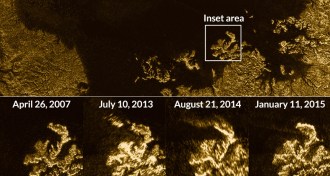 Planetary Science
Planetary ScienceNitrogen fizz fuels ‘magic island’ on Titan, simulation suggests
Nitrogen bubbles may be the source of the “magic island” on Saturn’s moon Titan.
-
 Planetary Science
Planetary ScienceBubbles may put mysterious fizz in Titan’s polar sea
Nitrogen bubbles may be the source of the “magic island” on Saturn’s moon Titan.
-
 Planetary Science
Planetary ScienceFood for microbes found on Enceladus
The underground ocean of Saturn’s moon Enceladus harbors an abundance of molecular hydrogen, which could be an important source of food if microbial life exists there.
-
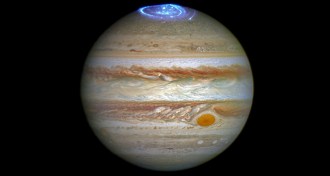 Planetary Science
Planetary ScienceJupiter’s Great Red Spot has company. Meet the Great Cold Spot
A previously unidentified dark mark on Jupiter has been dubbed the “Great Cold Spot” because of its temperature and resemblance to the planet’s Great Red Spot.
-
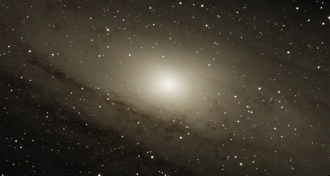 Science & Society
Science & SocietyEinstein’s latest anniversary marks the birth of modern cosmology
A century ago, Einstein gave birth to modern cosmology by using his general theory of relativity to describe the universe.
-
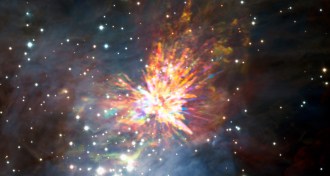 Astronomy
AstronomySquabbles in star nurseries result in celestial fireworks
Images from the ALMA observatory in Chile reveal that early days of stars can be just as fiery as their death.
-
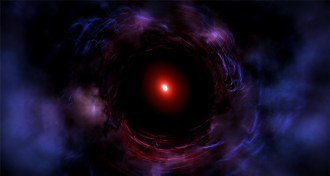 Astronomy
AstronomyMassive red, dead galaxy spotted in young universe
A hefty red, dead galaxy may raise questions about how galaxies formed in the early universe.
-
 Astronomy
AstronomyEvent Horizon Telescope to try to capture images of elusive black hole edge
Network of radio observatories will attempt a first-ever glimpse at an event horizon.
-
 Planetary Science
Planetary ScienceCompeting ideas abound for how Earth got its moon
The moon may have formed from one giant impact or from about 20 small ones.
-
 Tech
TechSpaceX launches and lands its first reused rocket
Aerospace company SpaceX has successfully reused a Falcon 9 rocket’s booster section for the first time.
-
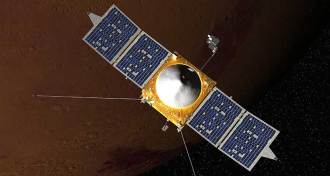 Planetary Science
Planetary ScienceExtreme gas loss dried out Mars, MAVEN data suggest
Over the planet’s history, the Martian atmosphere has lost 66 percent of its argon and a majority of its carbon dioxide, according to data from NASA’s MAVEN spacecraft.